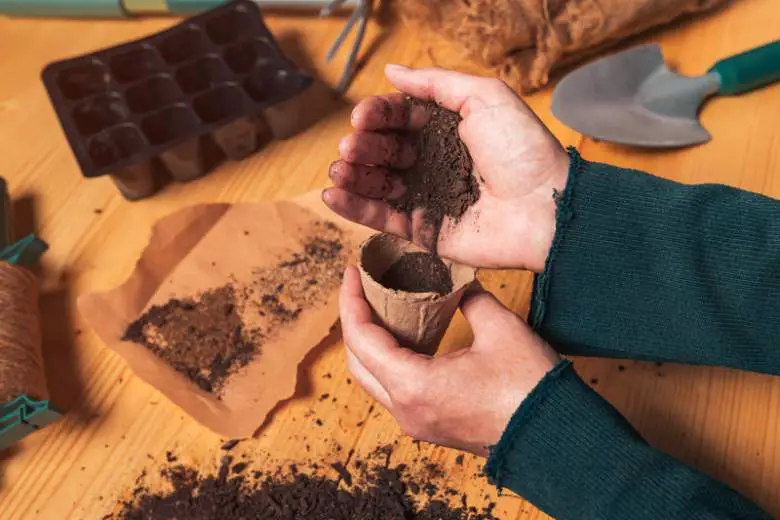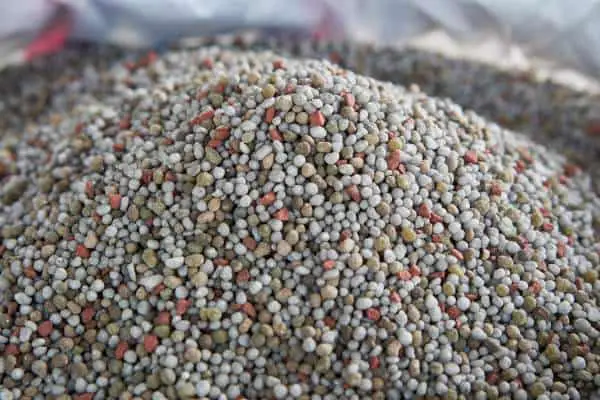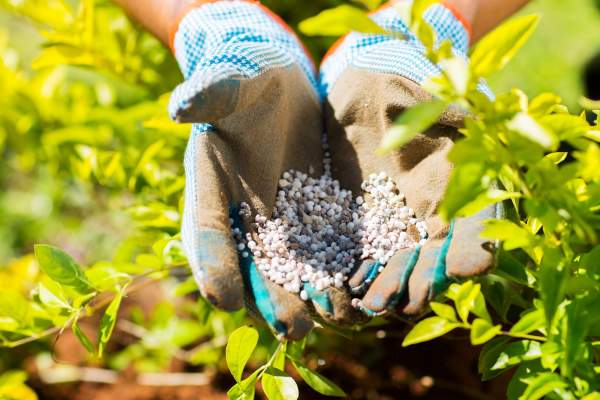When looking to begin your crops to add to your aquaponics or hydroponics system, you will need a suitable quality starter plug to give your plants the best chance of growth in the early days. One of the biggest names on the market is Rapid Rooter Plugs. Many gardeners often wonder because of the popularity.
Do Rapid Rooters have nutrients? Rapid Rooters are made from natural components of composted tree bark and other plant-based organic materials. The material is soilless, chemically, and pH inert.
It also comes with no added nutrients or pre-fertilizer besides micro-nutrients in the substrate.
Are Rapid Rooters Organic?
Rapid Rooters are made from organic materials such as the composted tree bark and other plant-based components to create the polymer-bound grow plug.
While the packaging doesn’t show these grow plugs are certified organic, you will find the plugs organically inert in several ways:
- The substrate is made from peat moss and plant-based polymer
- The grow plugs are not water soluble
- There is a 6.5 pH of the grow plugs
All parts of the Rapid Rooter are made from natural components; thus, you won’t find any chemical or genetic alterations.
Plants grown in Rapid Rooters won’t be affected or altered by starting life in these growth plugs.
What is a Rapid Rooter Made from Exactly?
General Hydroponics is the Rapid Rooters manufacturer and one of the prominent names for Hydroponics and Aquaponics gardening materials and supplies.
A Rapid Rooter composition is a unique mix of peat moss (composted tree bark) and plant-derived polymer binders. The medium and polymer combination has proven to have an optimal air-to-water ratio, and because of this, they help result in explosive root growth in the early stages.
Will Rapid Rooters Go Bad?
Rapid Rooters are chemically and organically inert as they are packaged. However, they are like any other growing medium specially designed to improve growth performance.
As a result, they can be prone to anything that could inoculate a growing medium, such as mold, mildew, or rot, if they are not stored correctly.
Proper storage would entail keeping the Rooters in their packaging until you need to use them.
Unused portions shouldn’t be handled if possible and kept in sealable plastic bags such as a Ziploc. It is possible to add a small amount of purified water during storage, so long as you place them in a cool, dark place.
With the correct storage, you can find they will last three years or more.
How Does a Rapid Rooter Work?
Consider Rapid Rooter Plugs to be a growing media on steroids. They’re full of powerful and much-needed nutrients for germination. They’re designed specifically to allow seeds to grow well, even though they don’t have any added nutrients in the manufacturing process.
You can make sure your young crops get off to a good start using media designed to help seeds grow to seedlings in the best possible way. The primary advantages come from the air-to-water ratio, which is determined by the medium’s structure.
The medium must be able to hold water and provide oxygen to the developing seedlings’ delicate roots. Plants of any stage or maturity will die in low oxygen conditions, and you can’t afford to take that chance when you’re investing in new crops.
Most of what occurs during the germination phase impact mature plants later, so it’s a good idea to care for your seedlings using the best grow media.
The composition of this brand of starter plugs uses organic materials bound in a breathable matrix.
It’s all maintained by an organic polymer made from compostable and environmentally friendly materials. These plugs promote the rapid growth of solid and healthy root systems.
Should I Soak My Rapid Rooters?
When searching, you can find many techniques growers use. However, the quick answer is yes; Soak your Rapid Rooter plugs in cool, distilled water before you seed.
Some growers soak plugs in weak nutrient solution before planting; however, Rapid Rooter plugs naturally come with sufficient fertilizers in the compounds.
You can also find some disagreement on the right amount of time to soak your Rooters. Twenty-four hours is the typical recommendation. Positive results can be got when soaking for 1-2 hours, although you are advised to follow the first recommendation if you are in no rush.
The critical part is making sure your water is cool or cold, as this can help simulate the last frost when in soil. Besides this, you’ll find the cold water permeating the grow medium without it dissolving any of the polymer bindings.
Be sure to let plugs drip-dry be moist in the germination phases as excessive soaking will wash away micronutrients in the medium.
How Wet Do My Rapid Rooters Need to Be?
Some growers report plug-germinated-seeds don’t crack open and sprout. A common reason for this is over-watering.
Following the first soaking, plugs should be placed in plug trays with drain holes to let excess moisture drip away.
Placing your plug trays into a propagation dome helps ensure that excessive runoff can contribute to the chamber’s humidity, thus offering a more even distribution of moisture.
Water, your Rapid Rooter, plugs enough to maintain their moistness, or so they are above 75% saturation.
Conclusion
Rapid Rooters are one of the best ways to give your plants the best chance to grow strong, right from the start.
Should you have all the right equipment such as your trays, propagation dome, and more, you’ll find the Rapid Rooter makes your life easier and helping your plants.
Related Questions
Here are a few Rapid Rooter and germination-related questions you may like to know the answers to.
How to store Rapid Rooters?
Store Rapid Rooters in a zip-lock bag in the fridge to help them last longer. For using them, remove as many as you require and place them in a small bag, so they warm up without drying out.
How should I start seeds in Rapid Rooters?
Soak your seeds in pH-adjusted water for 12 hours. Place 1/2 inch of perlite in the bottom of your seedling cup. Add 1/4 inch of water to the bottom of a seedling tray.
Take a soaked seed and bury it 1/2 inch deep inside your Rapid Rooter with the pointed end downward. Cover the hole with a more Rooter plug and place the Rooter plug on the perlite.
How do I clone with Rapid Rooters?
Soak your rooter plugs in water for a few hours and then place them in the tray you’ll use to hold your clones. Take your clone’s plant cuttings and make sure they have a stem of at least 2 inches and have a few leaves.
Will seeds germinate in the dark?
Most seeds germinate better when in dark conditions. However, certain species require light to grow. Make sure you understand the difference between seed light requirements and the light requirements seedlings need (sunlight)
How do I germinate seeds faster?
To get seeds to germinate faster is by getting water to the embryo more quickly than usual. One way shown to make a plant germinate faster is to place seeds in a food-grade plastic container. Once you do this, pour hot distilled water to cover them. Likewise, it would help if you determined whether the seeds require cold temperatures to germinate.
Does rooting hormone help germinate seeds?
Soaking seeds in rooting hormone can enhance your seeds’ germination rate compared to merely using water.
When should I remove my propagator lid?
The time to remove your propagator lid is when you spot signs of the seeds germinating. Leaving the cover in place until all seeds sprout means the first plants can grow leggy.





